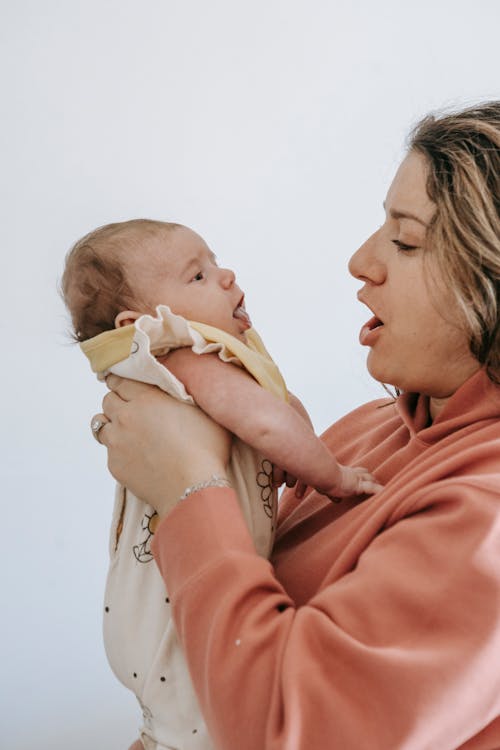After the birth of your third kid, you probably thought you were done for good. But your baby is soon starting school, all grown up and so determined to at least appear independent. Lately, however, you and your husband have started relishing the diaper changes again, exploring the possibilities of having a fourth child at 35.
Every pregnancy is different, and getting child number four at age 35 or beyond shouldn’t prove much of a hurdle for an already three times mum. If you are healthy and your previous pregnancies have been successful, there aren’t any particular risks involved.
It could be you’re wondering whether you can handle a fourth child at 35. Are you stretching your luck after being blessed with three healthy kids, what if you had twins? Looking at your family dynamics, another of either sex might create pigeon pairs or throw balance out of the window entirely.
Why is it Difficult to Have a Fourth Child at 35?
Someone hilariously stated that having a fourth child is like drowning, and then at that moment, someone is handing you a baby. Elderly or ‘geriatric’ multigravida is the fancy moniker that describes pregnancy at 35, multi used instead of prima, which means it’s not your first. It translates to advanced maternal age, a description that stems from outdated statistics that relegated risk to conceiving at that age.

However, changes associated with complications or passing on genetic conditions are high at 35 than at earlier ages. You’re born with all the eggs or ova you’re going to produce. As such, they age alongside you, and it’s also common to carry multiples. That’s because you’re likely to release two or more eggs during a menstrual cycle.
Abnormalities can happen in egg ripening and separation into cells or gametes, making the pregnancy carry a viability risk. Besides, it does get harder to get pregnant past the age of 35.
Other risks that you should be aware of when having a fourth child at 35 include;
Miscarriage
You may lose the pregnancy since there’s a 20% chance of miscarriage at age 35 compared to 17 percent for 20 to 30-year-olds. Still-births at 20 weeks gestation are common at age 35, which has been attached to placenta rupturing.
Gestation Diabetes
When your pregnancy hormones are high, they can prevent the production of insulin, which affects how your body regulates blood sugar. Chances of developing gestation diabetes at age 35 and above are higher than those of 25-year-old mums.
Signs include constant thirst and the need to pee more often, and gestational diabetes disappears soon after birth. There is, however, a risk of premature labor, and you could also develop type 2 and pre-diabetes.
Preeclampsia
A condition associated with high blood pressure patients, preeclampsia, relates to pregnancy in the presence of organ damage. It’s prevalent in women over 35 to 40 as well as those with gestational diabetes. This condition is a result of affected kidneys and liver.
You’ll start seeing symptoms at around 20 week’s gestation age, but these can happen before or continue postpartum. Signs of preeclampsia include;
- Very high blood pressure readings
- High protein levels in urine occasioned by foamy pee
- Sudden hand or face swelling
- Changes in vision
- Severe headaches
While there are other risks to be aware of, it’s not a direct indication that you should expect anything negative. You can manage all these with natural and medical means to ensure you’ll successfully have a fourth child at 35.
Will I Need a C-Section When Having a Fourth Child at 35?
Many issues, including those I’ve mentioned above, will raise your chances of undergoing a C-section when having a fourth child at 35. Besides the likelihood of blood clots or infection after this major surgery, you’ll become immobilized during the first few days of your baby’s arrival.

Potential conditions that will call for a caesarian section when you’re pregnant past the age of 35 include placental problems like previa and accreta. Placenta previa is where the placenta covers part or your entire cervix leading to blockage and bleeding during pregnancy. Accreta is when it extends too far into the walls of the uterus.
Women over 35 are twice as likely to suffer placental issues, which risk preterm birth. Seeing as multiples are prevalent at this age, your doctor may also recommend a C-section. Once again, all these are all possibilities, and nothing is certain until you’ve done all the tests.
What Is the Risk My Unborn Faces When Having a Fourth Child at 35?
It’s true that the older you are, the more likely your baby will be born premature or weigh less than 5.5 pounds at birth. Preterm birth happens before 37 weeks, and while these are real risks, you can manage them with proper prenatal care. You can tell the level of risk and the presence of problems with screens and tests, whose results will enable your doctor to manage your pregnancy better.
Prenatal screens that can predict any issues with your fourth child include ultrasounds, blood, and glucose monitoring. While recommended, it’s up to you to get tested. The results give a sense of your baby’s chance of particular conditions. But they can sometimes produce false negatives.
It’s easier to undergo screening after talking to a genetic counselor or start directly with diagnostic testing. Tests that you’ll undergo when having a fourth baby at 35 include;
Nuchal Translucency Screening
Screening is performed in your first trimester. An ultrasound checks the girth or thickness of your baby’s neck. They’ll also do blood tests to screen for genetic or congenital disabilities. Results of nuchal translucency screening indicate the risk your child has for trisomy 18, Down Syndrome, and other congenital disorders.
Quad Marker Screen
This test is performed on your second trimester. It involves blood work that screens for chromosomal issues like Down Syndrome as well as defects like anencephaly and Spina Bifida.
Normal results in this screening mean you can trust that no genetic disorder or congenital disability will affect your fourth child. Negative readings don’t necessarily indicate the presence of issues with your baby, only that they stand a higher-than-average risk.
Conclusion
Besides all the prenatal testing and preparation for having your fourth child at 35, it pays to take care of yourself. Pregnancy can place extra demand on your body, and prenatal vitamins, a healthy weight, and a balanced diet do the trick. For the best health of your baby, exercise, sleep sufficiently and minimize stress, all the while avoiding alcohol, tobacco, and other illicit drugs.

I’m Cathrine and I’m a 39-year-old mother of 3 from Utica, New York. And I’m extremely happy you’ve come to visit my hide-out on the web. Here I post about everything related to family-life and usually it will involve babies and lessons I’ve learned over the years from experts, friends, and my own mistakes. So hopefully you will find what i write fun and informational!

